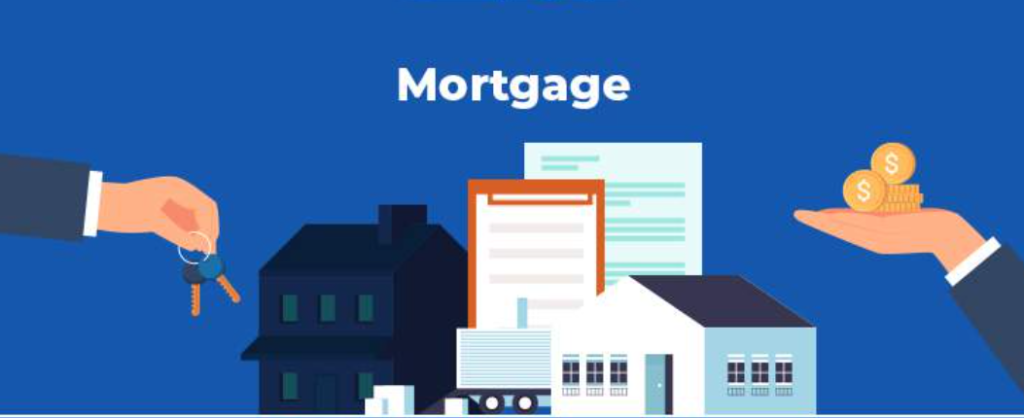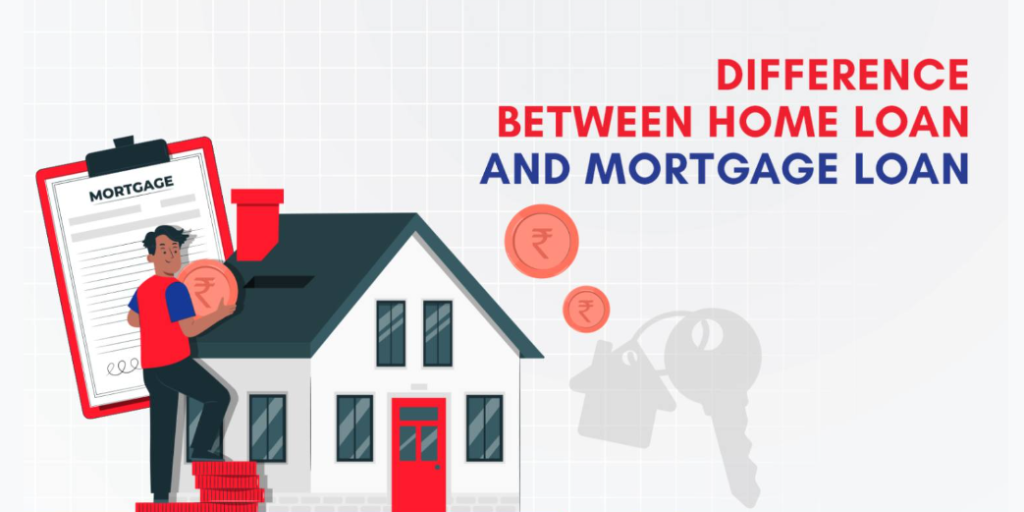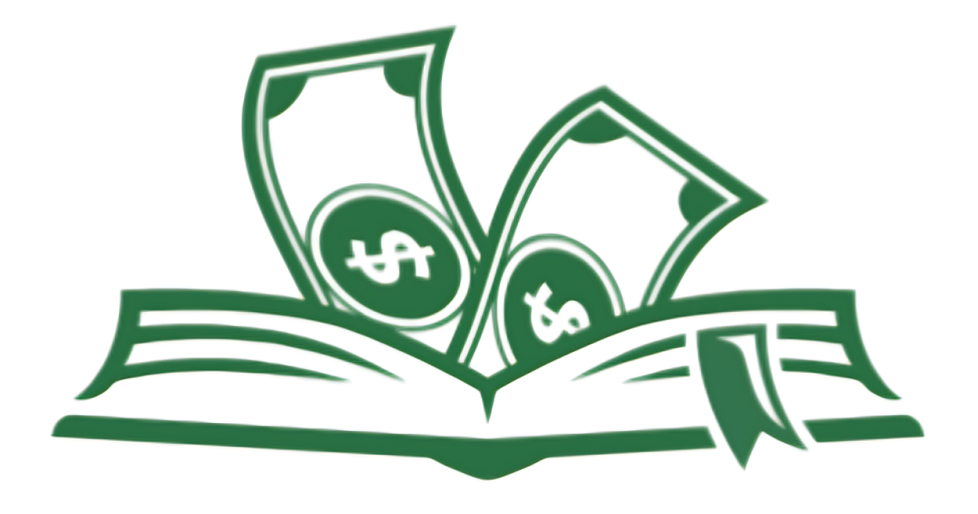A mortgage is a financial arrangement where you borrow money from a lender to buy a home or property. This agreement allows the lender to hold the property as collateral. If you cannot repay the borrowed amount along with interest, the lender has the right to take ownership of the property through a legal process known as foreclosure.
Access exclusive content on the moneymortal platform and stay informed with valuable updates.

What is Mortgage
A mortgage is a special kind of loan you use to buy a house or land. When you get a mortgage, you agree to pay back the money plus interest over time in regular payments. The property you’re buying becomes collateral, which means if you can’t make your payments, the lender can take the property back.
To get a mortgage, you apply with a lender and need to meet certain requirements like having a good credit score and making a down payment. Your application goes through a detailed process before final approval. There are different types of mortgages, like fixed-rate or conventional loans, depending on what suits you best.
Key Takeaway
- Mortgages are loans specifically designed for purchasing real estate, such as homes or land.
- The property being bought serves as collateral for the loan. If the borrower fails to repay the loan, the lender can take possession of the property through foreclosure.
- There are various types of mortgages available, including fixed-rate and adjustable-rate mortgages. Each type has its own advantages and considerations.
- The overall cost of a mortgage depends on several factors, including the type of loan, its term (e.g., 30 years), and the interest rate set by the lender.
- Mortgage rates can fluctuate widely based on the type of mortgage product and the qualifications of the borrower. Factors such as credit score, down payment amount, and debt-to-income ratio can influence the interest rate offered by lenders.
How Mortgages Work
Mortgages facilitate the purchase of real estate by allowing individuals and businesses to finance a portion of the purchase price rather than paying the entire amount upfront. When someone takes out a mortgage, they borrow money from a lender and agree to repay the loan amount along with interest over a specified period, typically spanning several years. The goal is to eventually own the property outright once the mortgage is fully paid off. Most traditional mortgages are structured as fully-amortizing loans, meaning that the borrower makes regular payments consisting of both principal (the loan amount) and interest. Although the total payment amount remains consistent throughout the loan term, the proportion of principal versus interest within each payment changes over time.
In legal terms, mortgages are considered liens or claims against the property being purchased. This arrangement provides security for the lender by granting them a stake in the property until the loan is repaid in full. If the borrower fails to make their mortgage payments as agreed, the lender has the right to initiate foreclosure proceedings. Foreclosure allows the lender to take possession of the property, typically through a legal process, and sell it to recover the outstanding mortgage debt.
For instance, when a residential homebuyer obtains a mortgage, the lender secures their interest in the property through a mortgage lien. This lien ensures that the lender has a legal claim on the property if the borrower defaults on their financial obligations. In the unfortunate event of foreclosure, the lender can enforce their claim by evicting any occupants, selling the property, and using the proceeds from the sale to settle the outstanding mortgage debt. This process underscores the importance of fulfilling mortgage obligations to retain ownership of the property and avoid the risk of losing it through foreclosure.
Types of Mortgage
Mortgages come in different varieties to suit the needs and circumstances of borrowers. The most common types include fixed-rate mortgages, adjustable-rate mortgages (ARMs), interest-only loans, and reverse mortgages.
- Fixed-Rate Mortgages: A fixed-rate mortgage is a standard type of home loan where the interest rate remains constant throughout the entire term of the loan. This means the monthly payments also stay the same, providing predictability and stability for borrowers. Fixed-rate mortgages are often preferred for their simplicity and consistency.
- Adjustable-Rate Mortgages (ARMs): An adjustable-rate mortgage starts with a fixed interest rate for an initial period, typically ranging from 3 to 10 years. After this period, the interest rate adjusts periodically based on market conditions. While ARMs usually begin with lower initial rates, there’s a risk that rates could increase significantly over time, potentially leading to higher monthly payments.
- Interest-Only Loans: Interest-only mortgages allow borrowers to pay only the interest for a certain period, usually 5 to 10 years. This results in lower monthly payments during the interest-only period. However, once this period ends, borrowers must start paying both principal and interest, which can lead to higher payments. Interest-only loans can be more complex and carry higher risks, as they often involve a balloon payment at the end of the loan term.
- Reverse Mortgages: Reverse mortgages are designed for homeowners aged 62 or older who want to access the equity in their homes without selling. With a reverse mortgage, the lender pays the homeowner either a lump sum, fixed monthly payments, or a line of credit based on the home’s equity. The loan is repaid when the homeowner sells the home, moves out permanently, or passes away. Reverse mortgages can provide supplemental income for retirees but come with specific eligibility criteria and considerations.
Mortgage Application Process
Applying for a mortgage involves several steps to ensure you can secure a loan to purchase a home. Here’s a simple breakdown of the process:
- Choosing a Lender: The first step is to select a trustworthy lender that fits your financial needs and offers competitive mortgage options. Research different lenders and compare interest rates and terms to find the best fit.
- Preparing to Apply: Before applying, gather necessary documents such as income statements, tax returns, employment information, and bank statements. Make sure your credit report is accurate and take steps to improve your credit score if needed.
- Mortgage Pre-Qualification vs. Pre-Approval:
- Pre-Qualification: This is an informal assessment based on basic information provided by the borrower. It gives an estimate of how much you might be able to borrow.
- Pre-Approval: A pre-approval involves a more thorough review of your financial background, including verification of income, assets, and credit history. It provides a conditional commitment from the lender for a specific loan amount, helping you understand your buying power.
- Completing the Application: Fill out the mortgage application either online or in-person at the lender’s office. Provide accurate details about your financial situation, employment history, and the property you intend to purchase.
- Document Submission: Submit required documents, which typically include:
- Proof of income (pay stubs, W-2 forms)
- Tax returns
- Bank statements
- Identification (driver’s license, passport)
- Property information (purchase agreement, property details)
- Review and Approval: The lender will review your application and documents to assess your eligibility for a mortgage. They may conduct a credit check and verify your financial information.
- Loan Processing and Sanction Letter: If your application is approved, you’ll receive a sanction letter outlining the loan amount, interest rate, and terms. This letter confirms your eligibility for the mortgage.
- Property Evaluation and Closing: The lender may conduct an appraisal of the property to assess its value and confirm it meets lending standards. Once everything is in order, you’ll finalize the mortgage details and proceed to the closing stage.
- Loan Disbursement: After all paperwork is completed and the property is cleared for purchase, the lender will disburse the loan amount to the seller or relevant parties involved in the transaction.
- Closing the Transaction: At the closing, you’ll sign the necessary documents, pay any closing costs, and officially take ownership of the property. The mortgage process concludes with the transfer of funds and legal completion of the home purchase.
Home loan vs Mortgage loan

| Aspect | Home Loan | Mortgage |
|---|---|---|
| Definition | A loan provided by a financial institution to fund the purchase of a home or property. | A legal agreement that uses the purchased property as collateral to secure the loan. |
| Nature | Specific type of loan used for buying residential properties. | Legal arrangement involving a loan secured by property. |
| Scope | Typically used for purchasing a primary residence or investment property. | Generally used to finance the purchase of real estate. |
| Security | The property being purchased acts as security for the loan. | The property purchased serves as collateral for the loan. |
| Repayment Terms | Repaid through regular installments over a specified period (e.g., 15 years, 30 years). | Repaid through monthly payments including principal and interest. |
| Interest Rates | Interest rates can be fixed or variable depending on the loan type and market conditions. | Interest rates can be fixed or adjustable based on the terms of the mortgage. |
| Legal Implications | Involves a loan agreement between the borrower and lender, detailing repayment terms and conditions. | Involves a legal contract (mortgage deed) establishing the lender’s rights over the property in case of default. |
| Purpose | Specifically tailored for homebuyers to finance property purchase. | Primarily used to facilitate property acquisition with the property serving as security. |
Benefits of Mortgage Loans
Mortgage loans offer several advantages for borrowers looking to purchase property or leverage their existing real estate assets. Here’s a breakdown of the key benefits of mortgage loans:
- Tax Benefits: One significant advantage of mortgage loans is the potential tax benefits they offer. Under the Income Tax Act of 1961 (in India, for example), borrowers can deduct the interest paid on mortgage loans from their taxable income, subject to certain limits. This deduction can result in lower overall taxes and is a valuable incentive for homeowners.
- Business Expansion: For business owners, utilizing mortgage loans, especially second mortgages for business purposes, can be beneficial. The entire loan amount can often be deducted from business taxes, promoting business growth and investment.
- Property Ownership with Minimal Risk: Mortgage loans benefit both borrowers and lenders. Lenders secure the loan with the property being purchased, reducing their risk. As long as borrowers make timely repayments, they retain ownership of the property while gradually building equity.
- Flexible Interest Rate Options: Mortgage loans offer flexibility in choosing interest rate options. Borrowers can opt for fixed-rate mortgages, where the interest rate remains constant throughout the loan term, or adjustable-rate mortgages (floating rates), where the interest rate may fluctuate based on market conditions. Additionally, interest-only mortgage options are available, providing different repayment structures to suit individual financial circumstances.
- Versatile Collateral Options: Mortgage loans allow borrowers to use various types of properties as collateral, including under-construction properties, fully constructed homes, residential properties, or commercial real estate. This flexibility widens borrowing opportunities and supports diverse property investments.
- Cost-Effective Borrowing: Mortgage loans provide a cost-effective way to borrow money for large purchases, such as homes or real estate investments. They typically offer longer repayment durations, resulting in smaller monthly payments compared to shorter-term loans. This affordability makes mortgage loans accessible to a broader range of borrowers.
Conclusion
A mortgage is a financial tool that allows individuals to purchase homes or real estate by borrowing money from a lender. The borrower agrees to repay the loan amount over a specified period, usually through monthly payments that include both principal and interest. Mortgages are secured by the property itself, which serves as collateral for the loan. If the borrower fails to make payments as agreed, the lender can take possession of the property through foreclosure. The mortgage application process involves choosing a lender, submitting required documentation, and obtaining pre-qualification or pre-approval. Once approved, the loan is processed, and upon closing, the borrower receives funds to complete the property purchase.
FAQ’s
How much mortgage can i borrow
The amount of mortgage you can borrow depends on various factors including your income, credit score, debt-to-income ratio, and the lender’s criteria. Typically, lenders consider your monthly income and existing debts to determine how much you can afford to borrow. They often use a debt-to-income ratio guideline, with most lenders allowing a maximum of around 28-36% of your gross monthly income to go towards mortgage payments. Additionally, your credit score influences the interest rate you qualify for, which in turn affects the loan amount you can borrow. It’s advisable to consult with mortgage lenders or use online calculators to estimate a comfortable mortgage amount based on your financial situation.
What is a mortgage example?
An example of a mortgage is when a person borrows money from a bank or lender to purchase a home. In this scenario, the home serves as collateral for the loan. The borrower agrees to make regular payments over a specified period, typically 15 or 30 years, which include both principal (the borrowed amount) and interest. If the borrower fails to repay the loan as agreed, the lender has the right to foreclose on the property, meaning they can take possession of the home to recover the outstanding debt. This arrangement allows individuals to afford buying a home by spreading the cost over time while providing security to the lender.
What Happens if I Miss a Mortgage Payment?
If you miss a mortgage payment, it can have serious consequences. Typically, mortgage lenders offer a grace period for late payments (usually around 15 days), after which a late fee is charged. If you continue to miss payments, the lender may report the delinquency to credit bureaus, negatively impacting your credit score. Additionally, after multiple missed payments, the lender can initiate foreclosure proceedings, leading to the potential loss of your home. It’s important to communicate with your lender if you’re facing financial difficulties to explore options like loan modification or forbearance to avoid defaulting on your mortgage.
